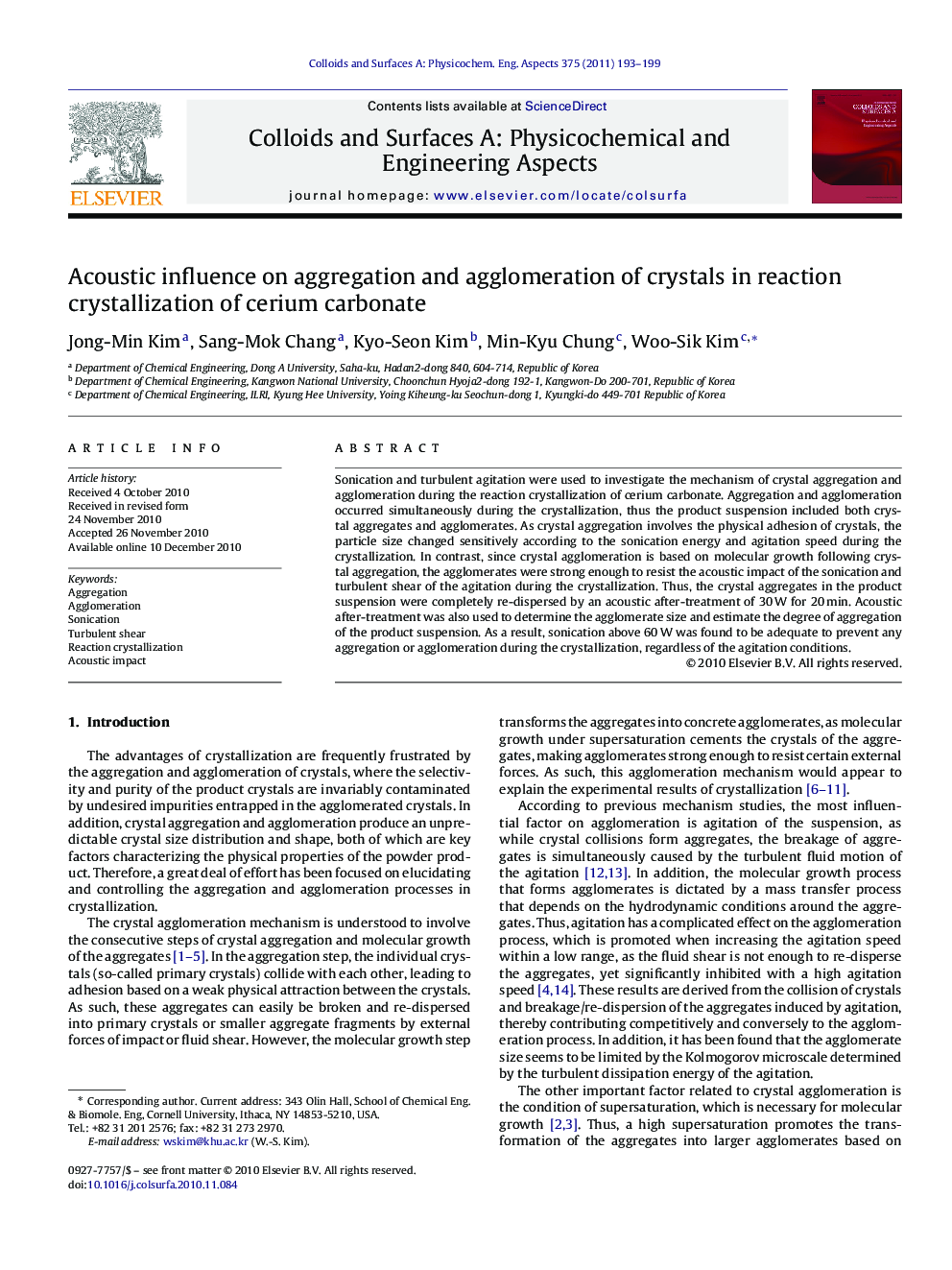| Article ID | Journal | Published Year | Pages | File Type |
|---|---|---|---|---|
| 595016 | Colloids and Surfaces A: Physicochemical and Engineering Aspects | 2011 | 7 Pages |
Sonication and turbulent agitation were used to investigate the mechanism of crystal aggregation and agglomeration during the reaction crystallization of cerium carbonate. Aggregation and agglomeration occurred simultaneously during the crystallization, thus the product suspension included both crystal aggregates and agglomerates. As crystal aggregation involves the physical adhesion of crystals, the particle size changed sensitively according to the sonication energy and agitation speed during the crystallization. In contrast, since crystal agglomeration is based on molecular growth following crystal aggregation, the agglomerates were strong enough to resist the acoustic impact of the sonication and turbulent shear of the agitation during the crystallization. Thus, the crystal aggregates in the product suspension were completely re-dispersed by an acoustic after-treatment of 30 W for 20 min. Acoustic after-treatment was also used to determine the agglomerate size and estimate the degree of aggregation of the product suspension. As a result, sonication above 60 W was found to be adequate to prevent any aggregation or agglomeration during the crystallization, regardless of the agitation conditions.
Graphical abstractAggregation and agglomeration processes under influence of turbulence and sonication.Figure optionsDownload full-size imageDownload as PowerPoint slideResearch highlights▶ Sonication more than 60 W prevented completely crystal aggregation/agglomeration in crystallization. ▶ Crystal aggregation was re-dispersed by after-treatment sonication of 30 W for 30 min. ▶ Sionication effect on re-dispersion of crystals aggregates exceeded turbulence effect on collision of crystal aggregation.
